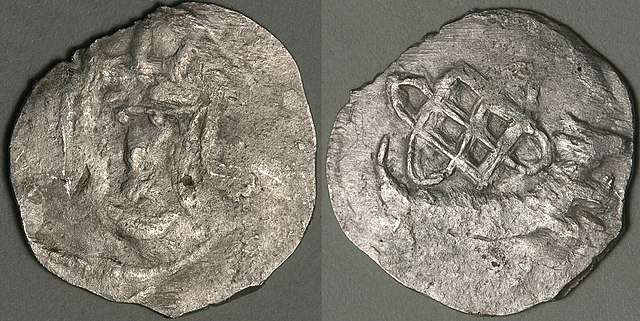Jogaila, later Władysław II Jagiełło, was Grand Duke of Lithuania, later giving the position to his cousin Vytautas in exchange for the title of Supreme Duke of Lithuania (1401–1434) and then King of Poland (1386–1434), first alongside his wife Jadwiga until 1399, and then sole ruler of Poland. Born a pagan, he converted to Catholicism in 1386 and was baptized as Ladislaus in Kraków, married the young Queen Jadwiga, and was crowned King of Poland as Władysław II Jagiełło. In 1387, he converted Lithuania to Catholicism. His own reign in Poland started in 1399, upon the death of Queen Jadwiga, lasted a further thirty-five years, and laid the foundation for the centuries-long Polish–Lithuanian union. He was a member of the Jagiellonian dynasty in Poland that bears his name and was previously also known as the Gediminid dynasty in the Grand Duchy of Lithuania. The dynasty ruled both states until 1572, and became one of the most influential dynasties in late medieval and early modern Europe.

King Władysław II Jagiełło, detail of the Triptych of Our Lady of Sorrows in the Wawel Cathedral, Kraków
Early coin of the Grand Duke of Lithuania Jogaila with a lion, minted at the Vilnius Mint between 1386 and 1387
Seal of Jogaila with his title (in Latin) as King in Lithuania, used in 1377–1386, before becoming the King of Poland in 1386
Lithuanian Denar of Jogaila (minted in 1388–1392) with Vytis (Pahonia)
Vytautas, also known as Vytautas the Great from the late 14th century onwards, was a ruler of the Grand Duchy of Lithuania. He was also the prince of Grodno (1370–1382), prince of Lutsk (1387–1389), and the postulated king of the Hussites.
Seal of Vytautas, depicting him with Gediminas' Cap
Privilege to Vilnius Cathedral issued by Vytautas in Vilnius on 16 February 1410 (Latin language)
Principality of Smolensk coin with lions or leopards and the Columns of Gediminas, showing it as a vassal of Vytautas the Great, circa 1399–1401.
Vytautas the Great Monument in Kaunas








